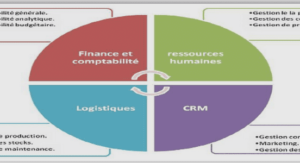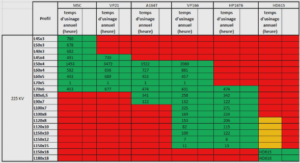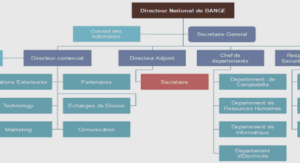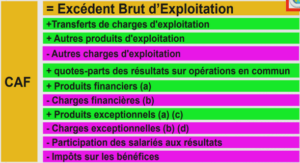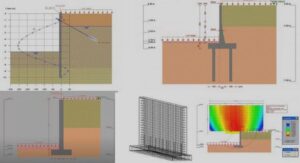Model and methodology
The modelling approach
The ocean model used in this study is the primitive equation OGCM OPA 8.1 [Madec et al., 1998] in the CLIPPER configuration [Treguier et al., 2001; Arhan et al., 2006]. This configuration uses z-coordinates on the vertical (42 geopotential vertical levels with 12 levels in the first 200 meters). It covers the Atlantic Ocean from the Drake Passage to 30°E and from Antarctica (75°S) to 70°N, with a Mercator isotropic grid at 1/6° resolution at the equator. There are f our open boundaries, at Drake Passage, at 30°E between Africa and Antarctica, in the Gulf of Cadiza and at 70°N in the Nordic seas [Treguier et al., 2001].
A horizontal biharmonic operator is used for lateral mixing of momentum with a coefficient of 5.5 1010 m4.s-1 at the equator, varying with the third power of the grid spacing. Mixing of temperature and salinity is done along isopycnals using a laplacian operator, with a coefficient of 150 m2.s-1 at the equator, also varying in latitude with the grid spacing. The vertical mixing of momentum and tracers is calculated using a second-order closure model [Madec et al, 1998]. In case of static instability, the vertical mixing coefficients are set to the large value of 1 m2.s-1. An enhanced laplacian mixing of momentum is added in the upper equatorial band so as to prevent the Equatorial Under Current (EUC) from being too intense [Michel and Treguier, 2002]. The added laplacian diffusion of momentum has a constant coefficient 103m2.s-1 between 1°N and 1°S and above 60m, decaying to zero at 3° of latitu de and 120m depth. This additional mixing term accounts for inertial instability processes that are not present in the model, at this spatial resolution [Richards and Edwards, 2003].
All surface forcing fields apart from the wind stress are derived from the European Centre for Medium-range Weather Forecasts (ECMWF) Re-Analysis ERA-15 for the period covering 1990 to 1993 [Gibson et al., 1997], and from the ECMWF analysis for the years 1994 to 2000. The non solar heat fluxes are formulated as suggested in Barnier et al. [1995], using a relaxation to the observed SST [Reynolds and Smith, 1994], with a feedback coefficient taken equal to -40 W.m-2.K-1, which corresponds to a relaxation time scale of two months for a 50m mixed layer depth. A relaxation to a climatological sea surface salinity with a similar timescale is added to the evaporation minus precipitation fluxes which are formulated as a pseudo salt flux, and include a river runoff [Treguier et al., 2001]. The wind stress forcing is derived from an Earth Remote Sensing (ERS)1-2 wind scatterometer [http://www.ifremer.fr/cersat/; Grima et al., 1999]. ERS winds were chosen instead of ECMWF because of the higher quality wind forcing, especially in the eastern part of the basin (Treguier, personal communication).
A three year spin-up procedure is used as follows: The model is run from 1990-1992 using heat and salt fluxes from ECMWF, and the climatology of ERS wind stress obtained by averaging years 1993 to 2000. Then, the model is forced by weekly ERS wind stress data between 1993 and 2000, and by daily ECMWF fluxes. More attention was paid to the heat budget in the equatorial basin for the years 1997 to 2000 away from the coastal regions (the model is not able to reproduce these particular dynamics, which are beyond the scope of the present study).
Here, T is the temperature; u, v and w are respectively the zonal, meridional and vertical currents, Kz the vertical mixing coefficient for tracers, h the Mixed Layer Depth (MLD), and Dl the lateral diffusion. The last term (e) on the right hand side corresponds to the atmospheric forcing, Q* and Qs are the non-solar and solar components of the total heat flux, and f (z = -h) is the fraction of the solar shortwave that reaches the mixed layer depth h. A formulation including extinction coefficients (0.35 m and 23 m) is assumed for the downward irradiance [Paulson and Simpson, 1977]. Note that the flux term contains a damping term, proportional to the difference between the modeled and the observed SST from Reynolds and Smith [1994]. The MLD is defined as the depth at which the density is equal to surface density plus 0.05 kg.m-³. The <.> represent a quantity integrated over the mixed layer.
To separate low- and high-frequency horizontal advections, the 35-day Hanning-filtered low-frequency component of currents and temperature (denoted by overbars) are first computed offline, and are then integrated over the ML (terms a and b in Equation 1). Higher-frequency advection (first two terms of (c) in Equation 1) is then deduced by subtracting the previously computed low-frequency advection from the total horizontal advection. It was checked that the result depended only slightly on the chosen period for the filter.
This decomposition allows the five terms contributing to SST evolution to be isolated. The temperature evolution, defined as heat storage, is governed by the sum of the zonal advection by low-frequency currents (a), meridional advection by low-frequency currents (b), effect of eddies for periods of less than 35 days (the usually small lateral diffusion is also included in this term) (c), subsurface effects (grouping turbulent mixing, entrainment – computed as a residual in the routine which vertically averages the different terms in the ML -, and vertical advection) (d), atmospheric forcing (e), and a residue (res) which was checked to be negligible (three order smaller than the others terms) because the temperature is very close to its mean in the mixed layer. This residue will not be considered hereafter. In the tropical Atlantic, the so-called ‘eddies’ include Brazil Current eddies, TIWsand intraseasonal equatorial wave activity. However, TIWs are the main contributors to this eddy term, in agreement with a previous study in the Pacific [Menkes et al., 2005]. The dominant contributor to the subsurface term proves to be the vertical diffusion at the base of the mixed layer, with a minor role for upwelling. This is due to our computation of the heat budget over a time and space varying mixed layer. This contrasts with a heat budget calculated over a constant depth mixed layer in which vertical advection dominates vertical diffusion.
Validation
In order to validate the MLD, thermocline depth, temperature vertical structure, Sea Level Anomalies (SLA) and currents in the model, different observation data sets were used. TOPEX/Poseïdon-ERS (T/P-ERS) SLA are used, on a 1/4°x1/4° grid every 10 days. The SLA were built after removing the mean sea surface over seven years (1993-1999) [Le Traon et al., 1998]. The accuracy of this product is about 2-3 cm RMS in the Tropics. The PIRATA moored buoy array [Servain et al., 1998] consist of ten moorings which measure subsurface temperatures at 11 depths between 1 and 500 m with 20 m spacing in the upper 140 m. TAOSTA (Tropical Atlantic Ocean Subsurface Temperature Atlas) is an inter-annual database of vertical temperatures (0-500 m) between 1979 and 1999, over a domain extending from 70°W to 12°E and 30°S to 30°N, with a 2×2° latitude-longitude grid [ Vauclair and Du Penhoat, 2001]. Modeled MLD are validated using the global mixed layer depth climatology from de Boyer Montégut et al .[2004] – referred to hereafter as dBM – available on a 2°x2° spatial grid at a monthly resolution, and computed from the same density criterion as in CLIPPER. SST weekly mean maps from the TMI (TRMM Microwave Imager, www.remss.com) radiometer between 1998 and 2000, at a resolution of 0.25° are also used. Finally, Richardson and McKee [1984] – hereafter RMK- provide a monthly climatology of ship-drift derived surface currents on a 1°x1° grid within the region 20°S-20°N, 10°E-70°W.
Fig.1 Longitude-Latitude plots of CLIPPER and T/P-ERS sea level anomalies : (a) CLIPPER standard deviation, (b) T/P standard deviation, (c) correlation, and (d) rms difference; (contours every 1 cm, except for correlation whose contours are every 1). For this comparison we have linearly interpolated the model on the T/P-ERS grid.
The SLA spatial variability from the model is comparable to T/P-ERS (Fig.1). Both low and high variability regions are well located with comparable amplitude. However, there is a lack of variability in the CLIPPER experiment in the northwestern part of the basin, especially in the retroflection region (10 cm for T/P and 8 cm for the model; Figs.1a and 1b). This also corresponds to the lowest correlation and highest RMS-differences (Figs.1c and 1d).
The vertical structure (temperature and D20) in the model is in reasonable agreement with PIRATA temperature measurements (Figs.2) despite an underestimation of high frequency variability in the thermocline in the model. Moreover, the model is too cold near the surface, especially at 23°W where differen ces between the model and observations reach up to 1°C. Moreover, the thermoc line is too diffuse compared to observations, a common flaw of numerical models in the equatorial regions.
Mean State
Description and validation
The Tropical Atlantic is subject to a trade wind regime whose seasonal variations partly govern the ocean. The south east and north east trade winds converge in the ITCZ whose position in the northern hemisphere is one factor which explains the presence of cold water just south to the equator, and warmer water north of it [see for instance Mitchell and Wallace, 1992]. The net heat flux is maximum above the cold tongue (160 W.m-2), and minimum over the subtropical gyres (Fig.3a). The ECMWF global structure is in good agreement with other atmospheric heat flux data set. However, the zonally-averaged net flux along the equator from ECMWF (37 W.m-2) is underestimated when compared to other data sets which are anyway not consistent together (for instance, 47 W.m-2 for NCEP/NCAR Reanalysis; 60 W.m-2 for UWM/COADS, and 89 W.m-2 for SOC; for more details, see http://www- meom.hmg.inpg.fr/Web/Atlas/Flux/main.html). This is mainly due to too weak solar and latent heat fluxes [Yu et al, 2004].
The modeled mean circulation in the upper ocean is realistic (Fig.3b), with the two branches of the westward-flowing South Equatorial Current (SEC) off the equator, separating into the southward-flowing Brazil Current and the northward-flowing North Brazil Current. The latter feeds the Guyana Current, and the eastward North Equatorial CounterCurrent (NECC) which extends into the Guinea Current in the GG. The subsurface circulation is validated and discussed in a specific study about the EUC [Arhan et al, 2006].
Fig.3 Longitude-Latitude plots of the 1997-2000 time-average of (a) ECMWF total heat flux (contours every 20W/m²) and ERS wind stress (10²N/m²), and (b) CLIPPER mixed layer temperature (contours every 0.5°C) and CLIPPER currents (cm/s).
Article
The modeled spatial D20 distribution is in agreement with TAOSTA observations (Vauclair and Du Penhoat, 2001, Figs.4a and b). The zonal and meridional slopes of the thermocline are similar in the model and the data: along the equator, the thermocline deepens from 50 m in the east to 120 m in the west in both data and model.
Figures 4c and 4d depict the mixed layer mean depth, in comparison with the dBM’s mixed layer depth climatology. The MLD is shallower in the eastern part of the basin: 10 m (both model and data), and deepens toward the west reaching 60 m in the observations but only 40 m in the model. This underestimation of the MLD is due to the combined effects of the absence of the very high-frequency weakly wind stress forcing and of the insufficient vertical resolution which prevents the transmission of the wind stress energy to the current shear and thus prevents the MLD from deepening [Blanke and Delecluse, 1993]. Note that the high spatial resolution of the model allows the narrowness of the shallow mixed layer in the equatorial band to be reproduced. This is not visible with a weaker resolution such as in dBM, but it is confirmed by close examination of vertical profiles from hydrographic cruises such as EQUALANT [Bourlès et al, 2002]. Despite a slight underestimation of the modeled MLD in the west, the model demonstrates a good ability to reproduce the mixed layer depth structure, a key feature for mixed layer heat budgets.

